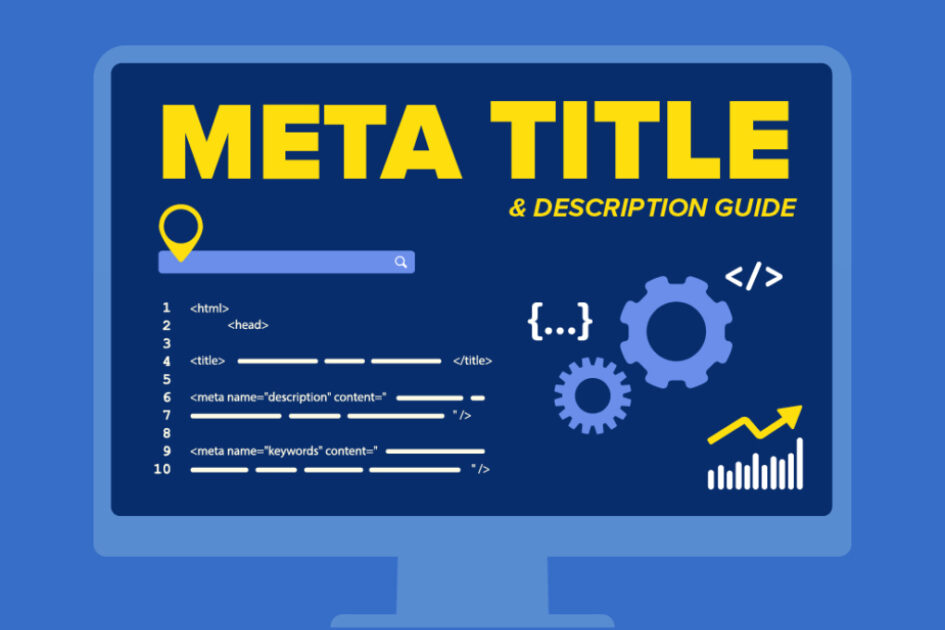If you want more people to visit your website, you need to make sure your pages show up in search results. One of the best ways to do this is by writing strong meta titles and descriptions. These are the short texts that appear in Google search results. They help people decide if they should click on your link or not. Let’s learn how to write them effectively!
What is a meta title?

A meta title is the main headline that appears in search results. It tells users what your page is about. For example, if your website is about baking, a good meta title could be “Easy Chocolate Cake Recipe—Quick & Delicious.”. This gives clear information and attracts people who are searching for a cake recipe.
What is a Meta Description?
A meta description is the short text below the title in search results. It gives more details about what the page contains. For example:
“Learn how to make a simple and tasty chocolate cake with this step-by-step recipe. Perfect for beginners!”
This tells the reader what they will find on your page and encourages them to click.
How to Write a Great Meta Title and Description
- Keep It Short and Clear
Your meta title should be around 50-60 characters, and your meta description should be around 150-160 characters. If they are too long, search engines will cut them off.
Example of a bad title: “Check Out Our Amazing and Delicious Chocolate Cake Recipe That You Will Love” (Too long!)
Better title: “Easy Chocolate Cake Recipe – Quick & Delicious”
- Use Keywords Naturally
Keywords help search engines understand your page. If your page is about a chocolate cake recipe, use words like “chocolate cake,” “easy recipe,” or “quick dessert.” But don’t overuse them. Your text should sound natural.
Bad example: “Chocolate cake recipe, best chocolate cake, quick chocolate cake, easy cake recipe” (Too many keywords!)
Better example: “Learn how to make a simple and tasty chocolate cake with this step-by-step recipe.”
- Make It Interesting
Your title and description should make people want to click. Use action words like “discover,” “learn,” “get,” or “try.” You can also add numbers or special words like “best,” “easy,” or “free.”
Example:
“5 Best Tips for Perfect Chocolate Cake – Try Them Now”
“Learn How to Make a Fluffy Chocolate Cake in 30 Minutes”

- Add a Call to Action (CTA)
Encourage people to take action. Words like “Try now,” “Learn more,” “Get started,” or “Shop today” can be helpful.
Example:
“Download Your Free Cake Recipe Guide Now!”
“Shop the Best Baking Tools – Limited Offer”
- Be Unique for Each Page
Don’t copy the same title and description for every page. Each page should have a unique title and description that match its content.
Bad example:
Title: “Welcome to My Baking Site”
Description: “We offer great baking tips.”
Better example:
Title: “Easy Bread Baking Guide—Step-by-Step for Beginners”
Description: “Learn how to bake soft and fluffy bread with our simple guide. Perfect for home bakers!”
Why Meta Titles and Descriptions Matter

- They Help with SEO: Search engines use them to understand your page.
- They attract more visitors: A good title and description encourage clicks.
- They Improve User Experience: People find what they need quickly.
Writing strong meta titles and descriptions is a simple but powerful way to get more visitors to your website. Keep them short, clear, and interesting. Use keywords naturally, and always add a call to action. Follow these tips, and you’ll see more people clicking on your website!
For a deeper analysis of your website’s current metadata and to discover relevant keywords that will boost your click-through rates, consider using Ahrefs. Ahrefs provides valuable insights into how your pages are performing, allowing you to identify areas for improvement and optimize your meta titles and descriptions for maximum impact.
Try updating your website’s meta titles and descriptions today. You might be surprised at how much it helps!

Leave a Reply